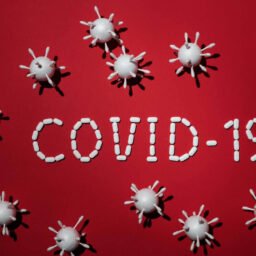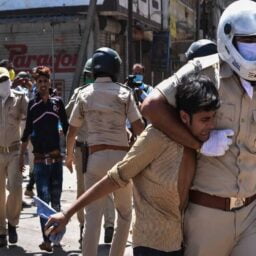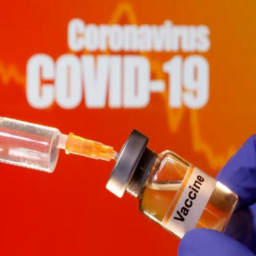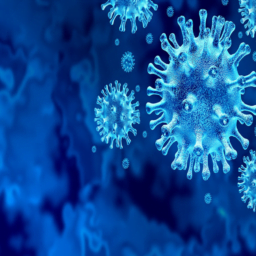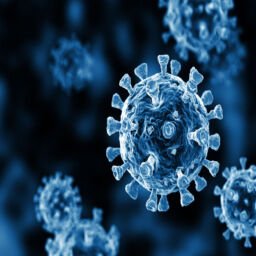INTRODUCTION
It is not a while ago that we got hit by the second wave of the covid -19, and for individuals who are directly affected, policymakers and practitioners, it continues to pose fresh problems & challenges. While the media and academics have focused on issues such as health and mental health infrastructure, preventative measures, vaccine development, the state of the economy, food security, livelihoods, education, and access to online communication channels, the danger the pandemic poses to detained people has been discussed more from a law and order standpoint. The prison population is seen as a threat they pose to public safety. As a result, the need to release them has been predominantly regarded through the prism of the threat they offer to society both in terms of virus spreading and the threat to law and order.
In the ongoing COVID-19 pandemic, incarcerated people have been subjected to the worst forms of human rights violations, ranging from a lack of medical care in detention centers to excessive overcrowding and being cut off from the outside world. Amnesty International’s recent report[1], found that the measures governments have put in place to prevent the spread of the infection are insufficient.
Female inmates not getting adequate needs and requirements especially for their monthly needs due to which they easily prey to this deadly virus.
OVERCROWDING OF PRISONS
Due to covid, The Supreme Court authorized states to establish High-Powered Committees (HPC) to assess the decongestion of the prisoners. Even though 3499 under trial had been granted interim bail, and 1,184 had been released on emergency parole according to the HPC data[2], citing the low positive rate in the capital at the time the vast majority of prisoners who have been released surrendered and, the prison population in Delhi reportedly surpassed 20,500, more than doubling the authorized capacity.
While the need for decongestion has never been greater, the hospital infrastructure and oxygen supplies are in serious shortages, the state cannot abdicate its obligation to protect inmates’ lives by forcibly releasing them and leaving them to fend for themselves.
Today’s high jail populations are the result of the criminal justice system’s failure to make the necessary changes in response to the pandemic. Even during the first month of the lockdown, police continued to make arrests that appeared to violate the law dictating when arrests are required. Courts that were not functioning properly further delayed trials, extending the time that under trial inmates were incarcerated which led to the overburden of prisoners.
PUBLIC HEALTH-CENTRIC APPROACH FOR THE DETAINEES
To protect convicts’ right to life, a health-centric solution addressing the current situation needs immediate attention. The criteria for granting Interim Bail and Emergency Parole must be based on the overall holding capacity of prisons, health-related vulnerabilities, comorbidities, disabilities, mental illness, special physiological needs of women, and age-related factors and the people from marginalized social groups.
The current methodology of categorizing undertrial detainees and convicts exclusively based on the nature and degree of the offense they have committed will not address the emergent scenario to combat the epidemic. In this time of public health emergency, the state must be responsible for protecting all inmates, UTPs, and convicts from the pandemic, and incarceration as the standard practice with which the prisoners and under-trials are dealt with must be reconsidered.
Given the pandemic’s lethal nature and the pervasive toll it is taking on human life and health, it might not be out of place to suggest that interim bail or emergency parole should not be denied, especially if the person belongs to a custodial minority or a marginalized group unless there are compelling reasons to deny it. This criteria to decongest jails would be contrary to Article 21[3] of the Indian Constitution that is right to life which should guide the HPC.
VIOLATION OF PRISONER’S BASIC NEEDS
The research by amnesty international[4] notably looked at the systemic deficiencies leading to major violations of prisoner’s rights in India, last year, including the state’s failed responsibilities for providing adequate technical support to maintain communication with the outside world and to avoid situations that could lead to jail unrest.
As a result of the lockdown, all personal physical meetings inside jails were prohibited across the country. Without making alternative arrangements, lawyers and family members were denied jail mulaqats (visits). Despite the Supreme Court’s directive to use video conferencing technologies to compensate for the lack of actual meetings, several states have failed to make the appropriate arrangements.
Even when some states made these technological advances, they were found to be insufficient. As the video calls relatively were short for instance just five to ten minutes. In Delhi prisons, convicts are only allowed ‘e-mulaqat’ with family members thrice a month for 15 minutes each. They were previously allowed eight physical meetings, 30-minutes each per month.
According to the petition[5] filed for the same, by Natasha narwal and Devangana Kalita, states that the computer center at the prison is not operational. Constant contact with family members is critical for convicts, yet many families do not have smartphones and due to some of their livelihoods are at stakes due to the pandemic they cannot afford to buy data packs or the inmates who cannot contact cannot make international calls as it’s not allowed.
The two activists requested a permanent provision of e-mulaqat with a variety of options for contacting the families for the same duration as of physical mulaqat, set up e-mulaqat camps, access to doctors, therapists, other medical specialists as needed resource persons and other professionals to complete their education through video conferencing.
FEMALE PRISONS NOT FEMALE-CENTRIC
In the prison, structural and systemic factors such as hygiene, cleanliness, social separation, and exposure to common surfaces have all contributed to the spread of Covid-19. While there are special women’s jails, this does not imply that they are created to fulfil women’s unique requirements. It isn’t designed to deal with female health and hygiene issues, such as reproductive and menstrual demands. Dr. Pratiksha Baxi argues in her article[6] that “Women inmates in male-defined prisons governed by male rules of incarceration experience specific forms of discrimination, deprivation and violence”
The risk of exposure to the Covid-19 virus is higher due to shared sanitation and hygienic facilities, particularly washrooms. Decongestion is needed to the point where washrooms need not be shared by numerous inmates and washroom surfaces may be sanitized after each inmate’s use. The HPC did not categorize women as a separate category, nor did it order the release of all pregnant women or mothers with children as a high-risk category. Nationality, nature of the offense, investigative agencies, and other factors were used to categorize female inmates in jail. This classification is based on a punitive policy that divides female inmates into meritorious and unworthy categories.
CONCLUSION
Due to the spread of covid-19 infection in prisons, governments in many countries have released a large number of inmates. Numerous deaths in custody have occurred as a result of poor sanitation and healthcare facilities, including heart, lung, liver, and kidney diseases, as well as HIV, tuberculosis, and cancer. The need of the hour is Adopting a Public health-centric approach to guide decongestion and release of prisoners. A better lookout for the mental health of the prisoners
About the time the Indian government declared a countrywide lockdown, the prison officials were compelled to take immediate actions to stop the contagion from spreading within the jails. As a result of the decree, all personal physical meetings inside jails were turned to e-mulaqats, which are not fully at service for the inmates.
Regulations and actions aimed at avoiding the development of the COVID 19 epidemic in jails may have exacerbated pre-existing prejudices toward inmates. The main goal of the prison and court officials was to manage the situation without disrupting the narrative about convicts’ “dangerousness” and “threat to law and order.”
While prison officials contend that they are implementing required preventive measures given current constraints, some have criticized the inadequacy of these efforts as well as the conditions inside jails. The Supreme Court of India took suo moto cognizance of the matter and directed state governments to form High-Powered Committees to identify categories of inmates who could be released, the grounds for release should not be based on the alleged nature of the offense it should rather be the vulnerability to the virus. Furthermore, the dearth of gender-disaggregated statistics on prisoner release implies a lack of attention paid to the needs of female inmates. Leaving women prisoners at the mercy of conventional bail jurisprudence while the pandemic wreaks havoc on the prison would be a failure of the state’s responsibility to protect their health.
Author(s) Name: Nitya Vashishtha (Student, Bennett University, Noida)
[1] “Forgotten Behind Bars: COVID-19 and Prisons”, (Amnesty international,18 March 2021)
<https://thewire.in/rights/prisoners-rights-covid-19-pandemic-amnesty-international> accessed 6th June 2021.
[2] Delhi district courts, Minutes of the HPC meeting, (2021)
[3] Constitution of India, 1950
[4] India 2020 (Amnesty international,29 September 2020)<https://www.amnesty.org/en/countries/asia-and-the-pacific/india/report-india/>
[5] Natasha Narwal, devangan kalita,”inmates should have access to private therapists” (barandbench3rd Jun, 2021) <https://www.barandbench.com/news/natasha-narwal-devangana-kalita-delhi-high-court-private-therapist> accessed 9th June 2021.
[6] Pratiksha Baxi, “Gendering the Pandemic in the Prison”(2020) <https://www.theindiaforum.in/article/gendering-pandemic-prison >accessed 8th June 2021


